There’s a place in the Côte d’Azur that feels like anything but.
The sun still shines – but the summer breeze in this place lacks its typical humidity. Its breath cools your skin as it tickles your face and arms. The seaside’s bougainvillea, now at their magenta apex, have morphed into spiky, purple thistles. The scent of lavender, rather than coconut sunscreen, wafts through the air, and in place of the sea flutter waves of brown, reedy grass.
It’s the Côte d’Azur in name alone. The plateau of Calern overlooks our seaside town of Antibes, and much of the French Riviera’s glittering coastline, for that matter. It lies 25 kms from Antibes as a crow flies, but double that distance along highways and roundabouts, and eventually the hairpin roads of the French Prealpes. It’s almost by magic that you arrive at the plateau’s oasis – or as the site is known among space enthusiasts, the Observatoire de la Côte d’Azur.
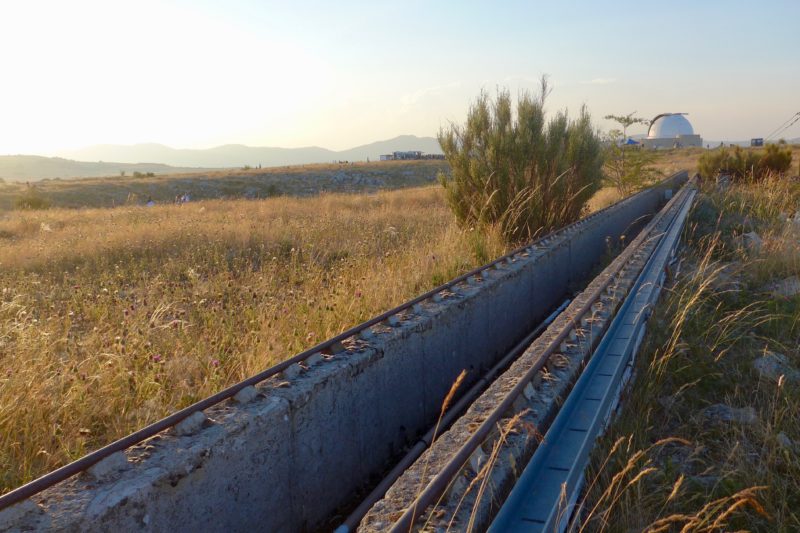
Philippe and I, along with 14-year-old Lolo and her local, childhood friend Clo, join a host of other terrestrials who have ascended here on a propitious night: the biennial Nuit Coupoles Ouvertes, the Night of Open Domes. Once every two years, the Riviera’s research telescopes welcome public eyes.
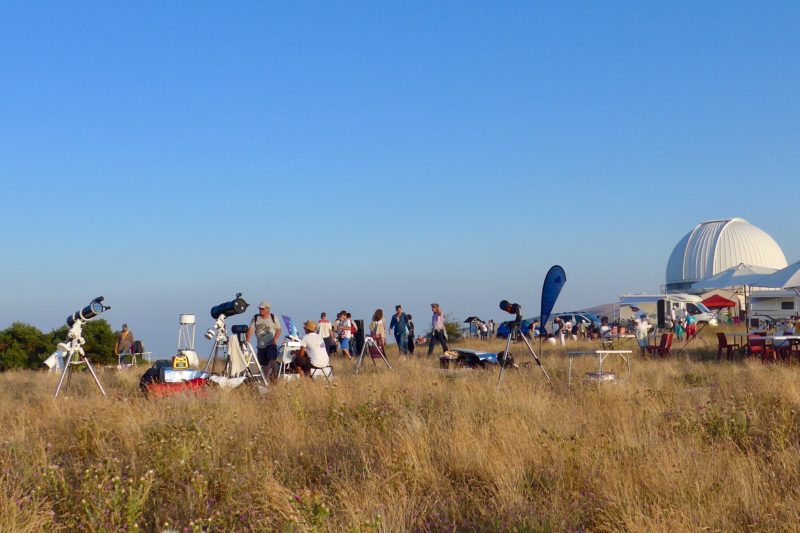
France is known for its fêtes. In the Côte d’Azur summertime alone, there are celebrations for the grape, the chestnut, and jasmine. There are festivals of jazz, fireworks, fishermen, and medieval music; archeology, humour, Cuba, and all the various saints. And every other year, the hills above all the other fêtes celebrate space, and our place within it.
Thanks to Lolo’s abiding interest, it’s our third visit to the outer space festival. I guess that makes us groupies, and we are not alone. Due to the night’s growing popularity, organizers have introduced pre-registration for all vehicles. The permits are free, but the taps cut off at 2,000.
Within the hollow of a great, white dome, an astronomer lectures about last year’s InSight mission to Mars. Lolo, perfectly attired in a NASA hoodie, pulls Clo into the crowd, so I follow and do my best to understand the gist: Not only is the talk about extraplanetary research, but it rolls out in fluent français. Above the squash of humans, a gigantic telescope angles into the bright sky. A 3D-printed version of InSight’s robotic lander lies on a table at the center of the circular room, and beside it stands a local collège’s model of a seismometer. As the air within the dome grows muggier and locker-room-scented, the spring-like contraption measures the ground’s movements and transmits them onto a laptop screen.
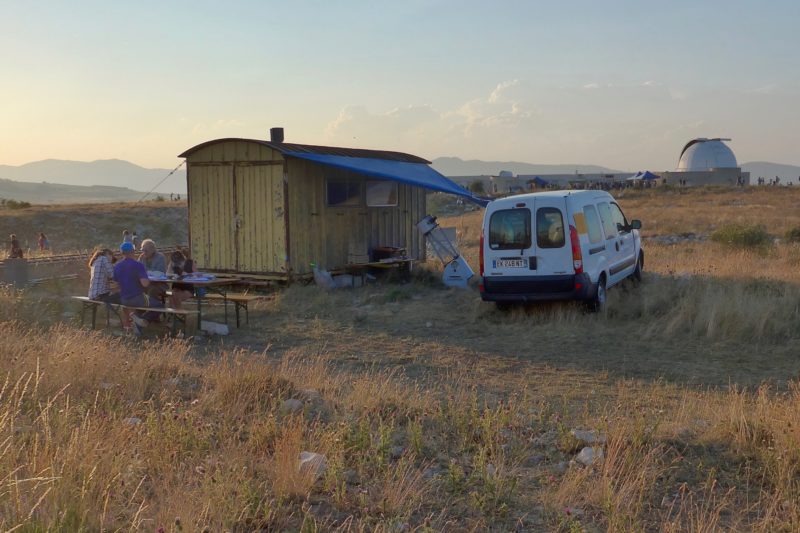
Back in the fresh air, the landscape stretches and rolls, unbroken by the construction we know from the coastline. Heaps of regional astronomy associations have set up their viewing contraptions, some as big as a Volvo. Members gather in small clumps, keen to teach us muggles about the sky even before it’s dark. Passion and goodwill abound. One chap engineered a safe way to view the sun. Another guy in a straw fedora zooms in on the sliver of a moon. Philippe gets his okay to hold a smartphone at the eyepiece.
“Not like that, Papa,” Lolo insists. I miss the eye roll but know it’s there. She captures this shot:
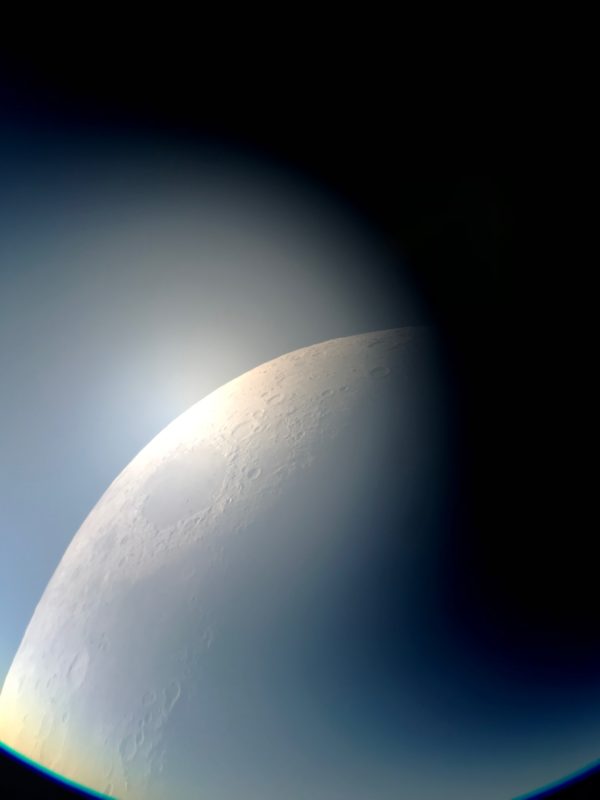
As dusk encroaches, the clouds bloom and pique-niques sprawl at the reaches of the Calern plateau:
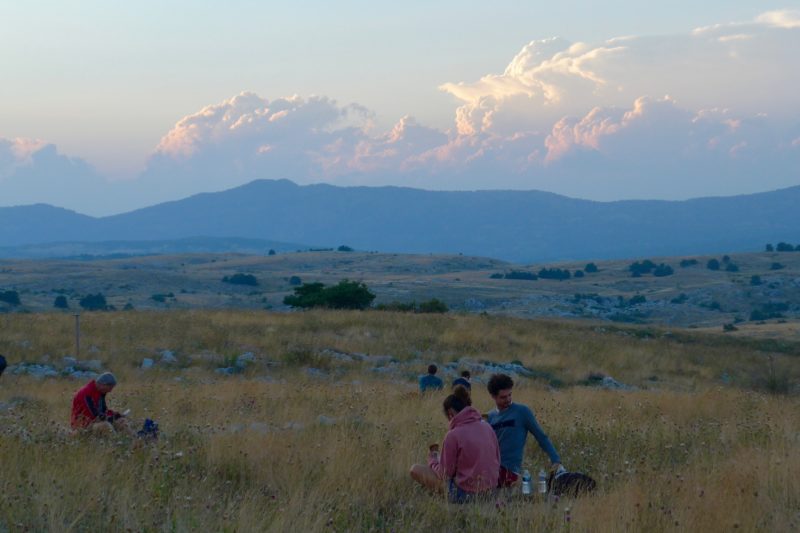
The light warms, intensifying the colours of the reedy landscape. The vision is even more ethereal with this research laboratory as a backdrop.
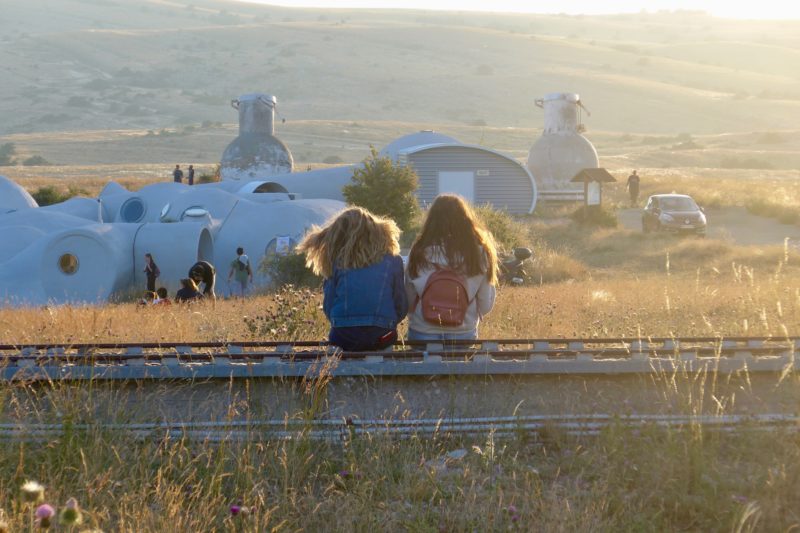
Dreamt up by Antti Lovag, the Hungarian architect who also fashioned Pierre Cardin’s Palais Bulles (Bubble Palace) near coastal Cannes, the Observatoire’s lab consists of interconnecting spheres that are as practical as they are otherworldly. Spheres, we learn, are less disruptive to the air around the telescopes.
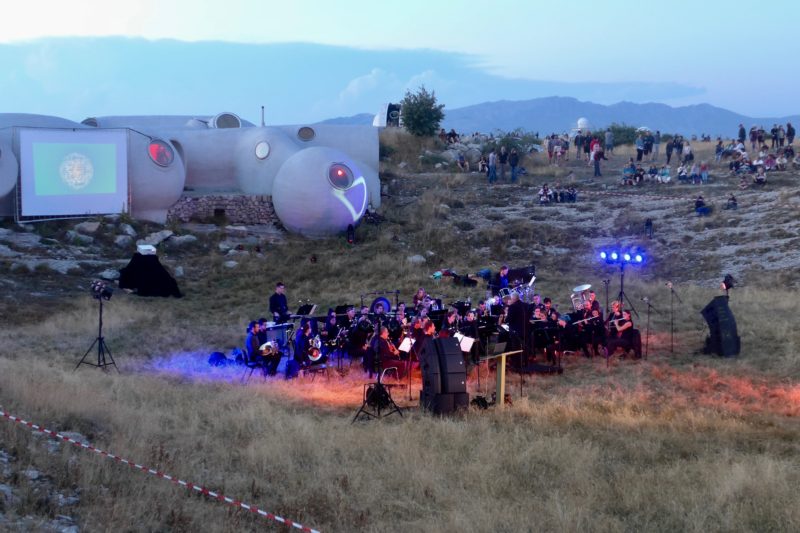
The sky continues to darken. A 40-piece orchestra tunes up in the crater beneath the troglodyte research lab. Philippe and I share a rock in the natural amphitheater; Lolo and Clo huddle nearby. A gazillion mercis pour into a mic, and then Yowza! Philippe captures the orchestra’s opening notes:
It’s the perfect opening for – what? A lecture? A slide show appears on a screen beside the research lab.
“Which stars are hotter?” an emcee asks en français. The blue ones or the red ones?
Voices from the audience call into the air and disappear. “Oui! The blue ones!” the emcee booms. “It’s the opposite of our taps at home!”
The topic of stars morphs into space, and space naturally leads to Einstein. I zip my very un-Côte d’Azur fleece against the chilly breeze. I’m doing my best to stay focused on the instruction, even its headlines, but it’d be tough enough in English. I snap a photo of the screen. It’s fuzzy, but a clearer image wouldn’t shed more light:
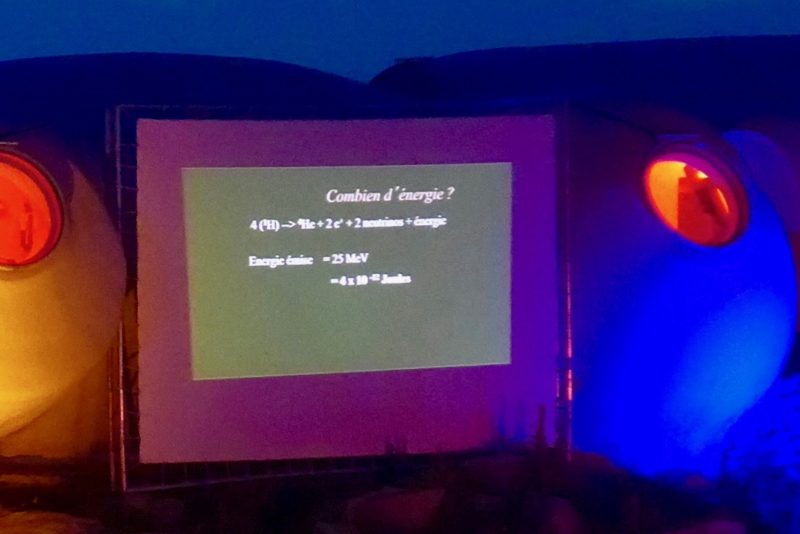
Philippe shifts around on the rock beside me. “I’m bored,” he says. I glance over at the girls. They’re checking out the kids behind them and giggling.
We plunge further into the E = mc2abyss, and Philippe announces he’s leaving after the next song – and may the orchestra get cracking. Lasers speckle the walls of the beam-me-up laboratory with drifting stars and spinning triangles. A line of whimsical clouds forms on the horizon and turns the backdrop into something even eerier.
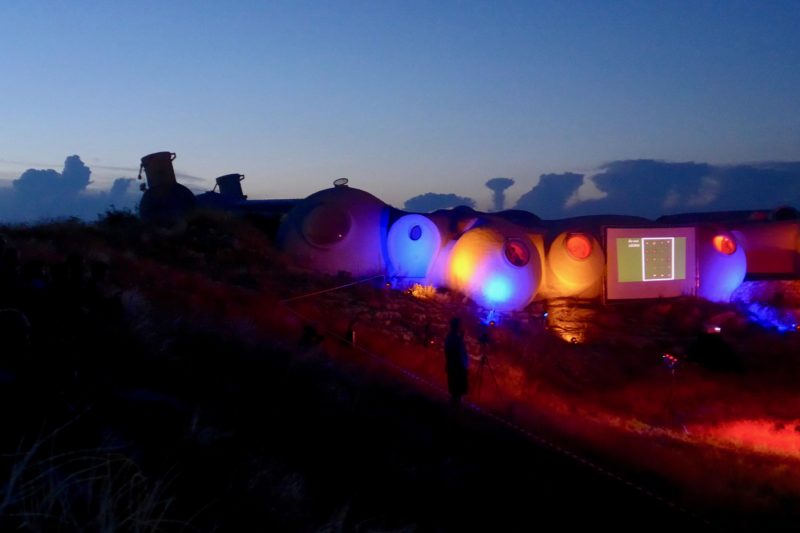
The second the conductor’s baton drops, Philippe rallies us out of the amphitheater. “I want to see more telescopes anyway,” Lolo says.
It’s the right call. With the skies dark, the associations’ enormous telescopes now whirr and zoom, shuttering to fix on their prescribed coordinates. I pull a gortex windbreaker from the backpack and zip it up to my chin; Clo is shivering, and Lolo declares the air perfectly beautiful. We join a fluid queue toward a scope pointed at a white speck in the sky. Squinting into the eyepiece, I spy – even as my feet plant right here on Planet Earth – Jupiter and its three, bright moons. We hit another queue. Through the next eyepiece bursts Saturn and its majestic rings.
From nowhere a green laser rips across the sky. It points us toward our parked car, the zigzagging roads, the roundabouts, and the thoroughfares. We steer into Antibes with the car windows wide. Past midnight, the air loses its daytime stickiness, but the seaside’s moisture remains. Streetlights illuminate sidewalks dotted in restaurant stragglers and dog walkers. We cruise the beach road and into the car rushes the sea air, popping with voices from pique-niqueurs and night owls.
We’re back in the Côte d’Azur. But the outrageous thing is, even as we had donned our extra layers and gazed into the heavens, we never actually left.

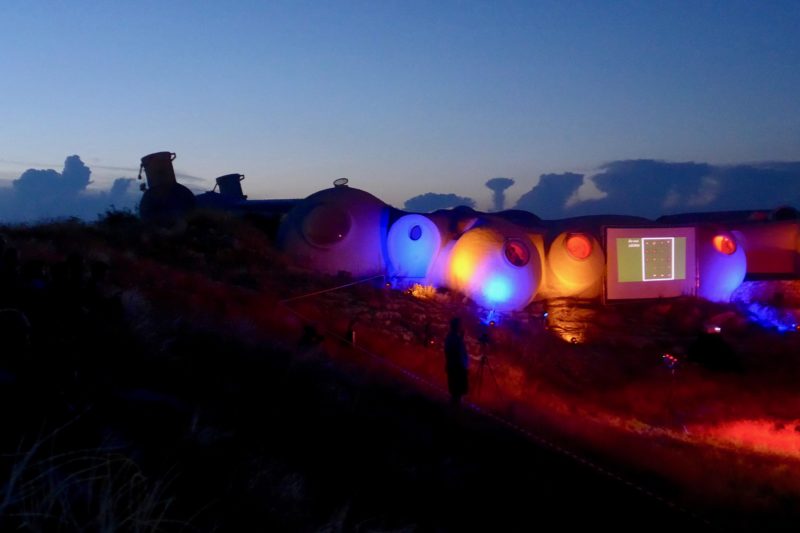
OK so that equasion was way past my pay grade, BUT I loved the recording and lunar image – how cool and somehow low key, a perfect diversion for une nuit d’été azurienne!
The text and description are super good as always and this time, the pics are really special and remind us how majestuous and special the universe is. And we have another proof of it at this moment while visiting Scandinavia, we benefit from an almost 40% bonus of dailight per day. Of course, we know that the people of that great area will have to give back that bonus when winter will come but as tourists, we have the privilege to chose our dates to come and enjoy the healthy and friendly atmosphere that prevail, here.
Great photos to illustrate your description of the ‘fete’! It actually looks like a really neat event to take in, particularly the architecture and telescope viewings!
Love the photos which allow us to experience the beautiful fete! Glad to know Lolo is there with you, and I assume the entourse is much better❤️
Looking at the sky always reminds me how small we are in the entire solar system. Then our solar system is a tiny dot in the universe.
It ia a great event in the plateaus of southern France. My favorite was astro concert sous les etoiles.
Btw I have never been but I heard Menton Music festival is good.
As always, enjoy the beautiful midi 🤩
What a unique setting to enjoy the wonders of space. Your photos really capture the experience and how special for Lolo and her friend!
Einstein avait la réputation de dormir entre 10 et 12 heures par jour. Je peux imaginer qu’il n’a jamais passé une nuit dehors à regarder les étoiles et à sonder le cosmos comme vous l’avez fait. Et pourtant…. il a quand même eu quelques bonnes intuitions. Qui sait, Lolo sera peut-être aussi inspirée que lui ?
What a lovely piece of writing! And the photos are incredible, too. Both really capture this kind of dreamy, peaceful, summery vibe. Thanks for this–hope all is well!
I really enjoyed your prose, very evocative. I felt transported, if not extraterrestrially, to the festivities of a magical evening.
Pictures are peaceful art of the past, present, and future; the old, the new, and the yet unknown.
Blessings, Aunt N
What a treasure you’ve found to share with Lolo and her friend…appreciation for nature, education and music! Enjoyed the photos and audio clip…keep exploring!